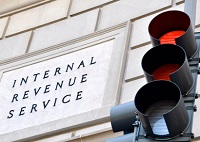We’ve blogged before about the increased use of 501(c)(4) social welfare organizations in the political area since Citizens United. However, a recent article highlights that many organizations are doubling down on the power of the 501(c)(4), as well as some impacts to the 501(c)(3) sector.
As background, both 501(c)(3) and (c)(4) organizations are exempt from income tax. However, 501(c)(3)s have additional benefits—the most well-known of which is the ability to collect tax-deductible contributions. These benefits come with burdens: 501(c)(3) organizations can engage only in insubstantial lobbying activity, and no partisan political campaign activity. On the other hand, 501(c)(4) organizations can engage in unlimited lobbying, so long as it is in furtherance of exempt purposes, and can engage in political activity as a non-primary activity. In addition, recent tax law changes mean that fewer individuals will itemize their deductions, which in turn may reduce charitable giving. In other words, the value of 501(c)(3) status will be lessened.
The article highlights the more historical model of exempt activity, with non-501(c)(3) labor organizations supplying extensive support to Democratic electoral campaigns, and 501(c)(3) organizations engaging in educational civic activities and pursuing lawsuits in the public interest. However, the article argues that while this model had frayed prior to Trump administration:
The 2016 election pushed these concerns past the breaking point. Thousands upon thousands of well-established public charities, after all, didn’t translate into robust voter turnout. Nor did they halt the ascent of a demagogue. And with Brett Kavanaugh’s recent confirmation, whatever remained of the left’s faith in the Supreme Court as an engine of justice has crumbled. While lawsuits may be crucial for challenging certain flagrant abuses of power, many resistance groups feel compelled to participate directly in the rough-and-tumble of electoral politics.
Currently, it appears that more organizations are viewing the 501(c)(4) model, paired with a PAC, as the best approach for creating real change. For example, in 2017, the ACLU’s 501(c)(3) assets grew 17 percent, while its (c)(4) assets grew 89 percent. The Southern Poverty Law Center spun off a (c)(4), the SPLC Action Fund. And the NAACP abandoned 501(c)(3) status altogether and transformed into a 501(c)(4).
The article also notes that some labor organizations—the Retail Action Project and Restaurant Opportunities Center United, for example—are moving into the 501(c)(3) space, and trying out new methods of organization and advocacy in that arena.
